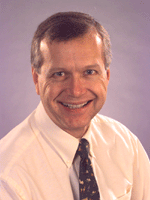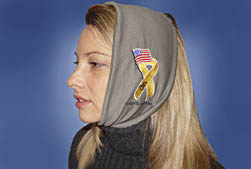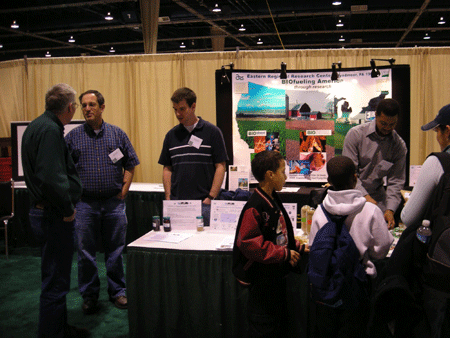In the Spotlight
Beefing Up Barley
Research Results Have Prompted Ethanol Producers to take Another Look at This Crop
 |
In the ethanol world barley may be corn’s poor cousin, but research efforts have made it an attractive feedstock option in the U.S. mid-Atlantic region.
Read more about the research in the October 2008 issue of Ethanol Producer Magazine. |
___________________________________

To learn more click here!
___________________________________
Food Safety Developments are in the Air
 |
An experimental treatment that relies on cold plasma, which is created by introducing electricity into a gas until free electrons are liberated, may one day keep fresh produce like apples and almonds safe from potentially harmful bacteria such as Salmonella, Listeria and E. coli. Photo courtesy of Paul Pierlott. |
An experimental treatment from the Agricultural Research Service (ARS) could one day help protect some fresh produce from potentially dangerous microbes such as Salmonella, Listeria and Escherichia coli O157:H7.
The treatment relies on cold plasma, which is generated when some form of concentrated energy--in this case, electricity--is introduced into a gas until free electrons are torn from the gas's atoms.
At the ARS Eastern Regional Research Center in Wyndmoor, Pa., microbiologist Brendan Niemira and engineer Joseph Sites--who are developing the process--exposed Golden Delicious apple samples to various microbial pathogens. Then they treated the samples with plasma.
Click here to read all about it!
____________________________________
ERRC Participates in Bioenergy Awareness Day in Washington, DC, June 10-20, 2008 |
 |
Click here to view more photos!
___________________________________
 |
Congratulations to Dr. Akwasi Boateng on being Elected a Fellow of the American Society of Mechanical Engineers |
Dr. Akwasi Boateng has been elected a Fellow of the American Society of Mechanical Engineers. The Fellow grade of membership recognizes exceptional engineering achievements and contributions to the engineering professtion. Dr. Boateng was recognized for his pioneering research on combustion and related thermochemical processing technologies.
Congratulations Dr. Boateng!!!
___________________________________
 |
Biofuels Journal Highlights ERRC Biodiesel and Barley Ethanol Research in March/April Issue |
Click here to read all about it!
__________________________________
 |
Congratulations to Dr. Kevin Hicks as this year's NAA Senior Research Scientist of the Year! |
Dr. Hicks is honored for his "Outstanding research accomplishments during his entire research career and for outstanding leadership of a very productive ARS Research Unit for the last twenty years."
___________________________________
Protecting U.S. Troops with Fireproof Wool

Biopolished wool, developed at the ARS Eastern Regional Research Center in Wyndmoor, Pennsylvania, is displayed as an army neck gaiter. A new ARS-developed polymer can be added to this fabric to make it flame retardant.
(D1125-1)
Though natural, untreated wool is scratchier than synthetic fabrics, wool is less susceptible to burning. This makes it an ideal fabric for uniforms worn by members of the military, firefighters, and others whose occupations expose them to fire.
“Wool burns with a self-extinguishing flame and produces a soft ash that dissipates and will not lodge in open wounds,” says Jeanette M. Cardamone, a chemist at the ARS Eastern Regional Research Center (ERRC) in Wyndmoor, Pennsylvania. “Synthetic materials, on the other hand, form hot, molten beads that can drip into a wound and cause trauma.”
Read more about the research in the May 2008 issue of Agricultural Research Magazine.
_______________________________________
2008 Career Day at ERRC
On April 24 and 25, the Eastern Regional Research Center's annual Career Day will take place. It is expected that approximately 600 Philadelphia area students will attend this year. With over a dozen scientific exhibits for the students to visit it is our hope that some of these students will be inspired to enter scientific careers and perhaps someday work for the USDA.
http://www.arserrc.gov/careerday
__________________________________
National Corn Growers Association visit ERRC
.gif)
Dr. David Johnston discusses new energy saving enzymatic methods to produce starch and ethanol from corn.
Members of the National Corn Growers Association's Research and Business Development Team visited the Eastern Regional Research Center on March 20 to learn about the research being conducted to produce food and fuel (as well as feeds and fibers) from corn and corn stover. The NCGA members were given a research tour of ERRC's state-of-the-art laboratories and pilot plants to see the latest advances in research on fuel ethanol, biodiesel, pyrolysis and gasification-derived fuels, and the many food and feed type coproducts produced during biofuels processes. ERRC is conducting research for the sustainable production of biofuels from agricultural feedstocks so that we do not overuse food crops or harm the environment from biofuels production.
Click here for more photos.
_____________________________________
Science Update: Food Safety Help for Processors
A new Internet resource could be invaluable to food processors—especially, to smaller meat and poultry processing companies. The information it provides can answer food safety questions and help food processors make science-based decisions to produce safe and wholesome products for consumers. Called the Predictive Microbiology Information Portal, or PMIP, it offers information on research, regulations, and resources related to Listeria monocytogenes in ready-to-eat foods. Soon it will be expanded to include other pathogen and food combinations. To help ensure the safety of food processing methods, a searchable database allows users to find information that can be used to develop plans for Hazard Analysis and Critical Control Point inspection.
Developed in collaboration with Rutgers University and Decisionalysis Risk Consultants, Inc., of Ottawa, Ontario, the portal includes a tutorial with instructions on using and interpreting predictive models. It links to the ARS Pathogen Modeling Program and ComBase, which provide diverse resources associated with databases, regulatory requirements, and food safety principles. The PMIP Web address is www.ars.usda.gov/naa/errc/mfsru/portal.
Vijay K. Juneja, USDA-ARS Microbial Food Safety Research Unit, Wyndmoor, Pennsylvania; phone (215) 233-6500.
_____________________________________
ERRC Participates in the 2008 Pennsylvania Farm Show

ERRC's Victor Wyatt provides information to a Farm Show visitor on FOAC's biodiesel research. Looking on are (from L to R) Sue Reed, Marshall Reed, and Dan Solaiman

David Fink of Green Renewable Energy (back to camera) discusses renewable fuel research with ERRC's Neil Goldberg with Charles Mullen nearby. Victor Wyatt answers scores of questions about biodiesel for local school children who were very interested in ERRC's work.
ERRC and its employees participated in this year's PA Farm Show, January 5-12, in Harrisburg, PA. ERRC was featured in the special Renewable Energy Section where Center Scientists and Engineers fielded questions and explained ERRC's research on biodiesel, fuel ethanol, and renewable fuels derived from pyrolysis and gasification to hundreds of visitors. Governor Rendell and Agricultural Secretary Dennis Wolf stopped by ERRC's booth on Saturday, January 5, to thank ERRC for pioneering research on renewable energy and for networking and collaborating with so many Pennsylvania companies, universities, producers, and the State Government Agencies. |
Upcoming Events
- September 24 - Green Team Meeting, Noon - 1 PM in Room 2006
- October - Hispanic Heritage Month
- October 3 - Hispanic Heritage Month Keynote Speaker: "Three Hispanic Generations in America: A Personal Account" presented by Dr. Carlos Santoyo, Deputy Area Director, NAA; to be held in the Auditorium at 10:15 AM
- October 7 - Hispanic Heritage Month Documentary Film: "Jam Miami: A Celebration of Latin Jazz" to be held in Room 1025 at 12:00 PM
- October 13 - Closed for Columbus Day
10 Most Recent Publications
Additional Publications - We have 5600+ publications online that you can view and print.
The following publications are not yet online. To request a reprint, please email Patti.Durkin@ars.usda.gov with your name, address, and reprint number.
| REPRINT |
TITLE |
AUTHOR |
| 7984 |
Analysis of Al-2/LuxS-dependent transcription in Campylobacter jejuni Strain 81-176 |
Y. He, J.G. Frye, T.P. Strobaugh, Jr., and C.-Y. Chen |
| 7983 |
Prion infected meat-and-bone meal is still infectious after biodiesel production |
C.E. Bruederle, R.M. Hnasko, T. Kraemer, R.A. Garcia, M.J. Haas, W.N. Marmer, and J.M. Carter |
| 7982 |
Exploring a role in tanning for the gap region of the collagen fibril: catechin-collagen interactions |
E.M. Brown and P.X. Qi |
| 7981 |
Response of thermochemical and biochemical conversion processes to lignin concentration in alfalfa stems |
A.A. Boateng, P.J. Weimer, H.G. Jung, and J.F.S. Lamb |
| 7980 |
Effects of antioxidants on polymeric coatings for a fibrous collagen material: leather |
C.-K. Liu, N.P. Latona, and P. Cooke |
| 7979 |
Concentration of key elements in North American meat & bone meal |
R.A. Garcia and K.A. Rosentrater |
| 7978 |
Reversed-phase and aqueous normal-phase retention in multiclass LC-MS analysis of antibiotics |
K. Mastovska and A.R. Lightfield |
| 7977 |
Streamlining methodology for the miltiresidue analysis of ß-lactam antibiotics in bovine kidney using liquid chromatography-tandem mass spectrometry |
K. Mastovska and A.R. Lightfield |
| 7976 |
The identification of mono-, di-, tri-, and tetragalactosyl-diacylglycerols and their natural estolides in oat kernels |
R.A. Moreau, D.C. Doehlert, R. Welti, G. Isaac, M. Roth, P. Tamura, and A. Nunez |
| 7975 |
Electrical properties of food |
H. Zhang | |